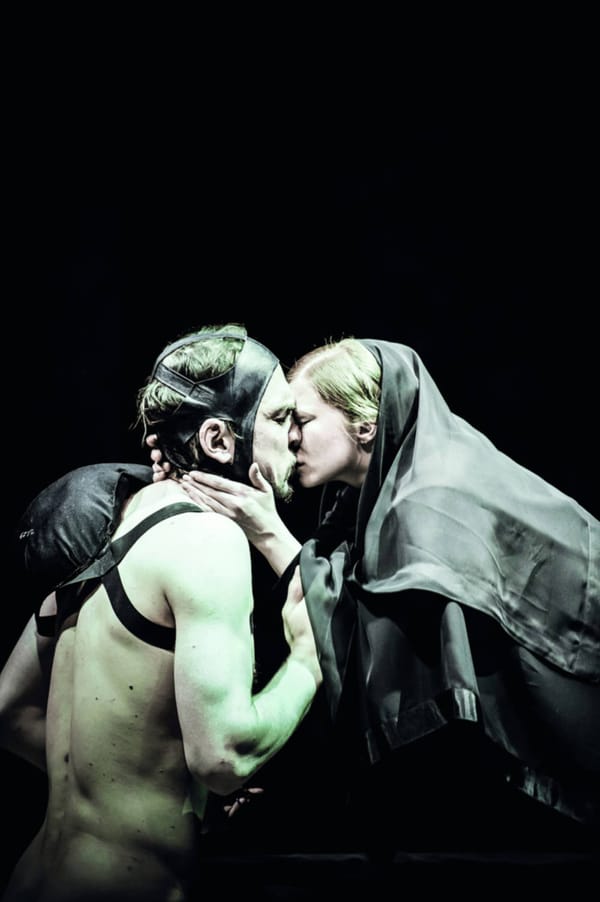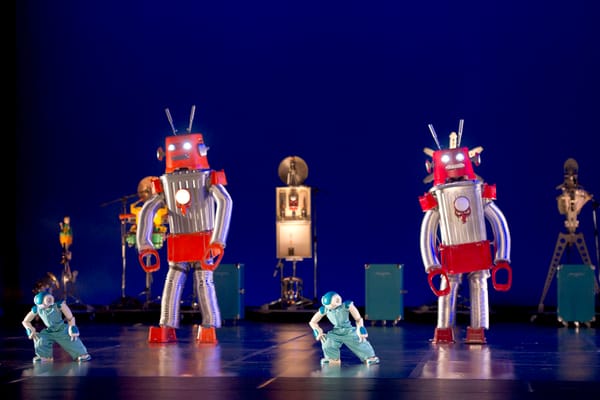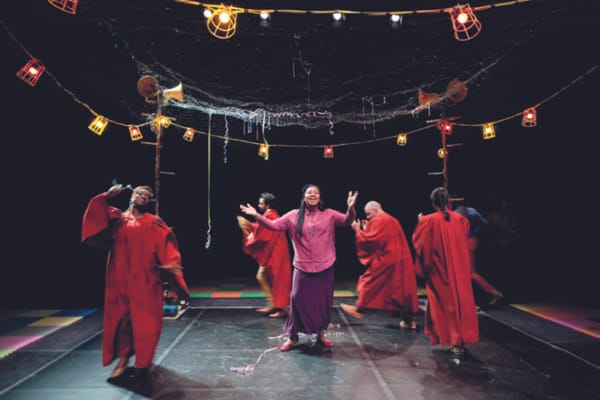Danza Contemporánea de Cuba | Electrifying dance with a Cuban flavour
Danza Contemporánea de Cuba was on at the Barbican on the 23rd February

Cuba’s premier dance company stopped by London for one night last week during their whirlwind tour of the UK. Founded in 1959, Danza Contemporánea de Cuba has had over half a century to develop its distinct aesthetic – contemporary dance and classical ballet, with Spanish and Afro-Caribbean influences. While they have performed in London before – at the Royal Opera House, Sadler’s Wells, and the Coliseum – this is their first time on the Barbican stage. This tour sees them showcasing three completely new pieces from award-winning choreographers Annabelle Lopez Ochoa, Theo Clinkard, and George Céspedes.
The evening opened with Ochoa’s Reversible. Choreographed specifically for Danza Contemporánea de Cuba, Ochoa’s work deals with ideas of gender, seduction, and rivalry, with both the male and female dancers going topless at various parts of the choreography. In addition to the soundtrack – sometimes drumbeats, sometimes sibilant whispers, sometimes pure silence – this adds to the primal, almost mystical, quality of the piece. In one section, sensuality is conveyed beautifully through bachata rhythms and graceful hip movements. Ochoa also playfully interchanges traditional gendered clothing: the male dancers wear skirts and the female dancers wear trousers. It works surprisingly well. The piece starts out with the dancers expressing two distinct gender roles, but as the performance goes on the boundaries between male and female become increasingly blurred, culminating in a powerful ending where the two genders “unite into one single breath”.
The second piece was The Listening Room by Clinkard, a British choreographer. Its concept is quite unique – the dancers interpret a soundtrack that they hear through noise-cancelling headphones, while the audience listens to a different track entirely. As Steve Reich’s instrumentals filled the hall, I could almost deceive myself that the energetic dancing on stage was to the same beat. Then the audience’s soundtrack abruptly switched off. Despite the utter silence, the dancing on stage continued as though nothing had happened. It was then that I realised the disconnect between the dancers and the audience. It was as though the music was visible only through the movements of the dancers; watching their free interpretations, I found myself trying to guess what kind of music they were really listening to.
Finally, the evening concluded with a piece by Céspedes, the company’s own in-house choreographer: Matria Etnocentra. The piece is something of a tribute to Cuban identity – the regimented daily life combined with the verve and energy of the country’s inhabitants. Military drill-inspired formations dominate the first section; the regularity of the marshalled configurations contrasts with a later section, in which the dancers pound their clenched fists against their hearts. Is this a form of social commentary by Céspedes? The dancers run off stage for a nostalgic, yearning solo dance by Iosmaly Ordoñez, who then dons a modern outfit to join the rest of the troupe in a lively finish with Cuban salsa rhythms.
Cuban energy runs through the three performances like a thread. In Reversible and Matria Etnocentra, the choreography is designed specifically with the company’s background in mind. In Reversible, “the concept of gender and soul is universal” but the dancing, especially the bachata sequences, are particularly Cuban; in Matria Etnocentra, the entire concept of the piece revolves around the social context of Cuba. Even in The Listening Room, a piece with very little direction from the choreographer, it shows through in the dancers' own interpretations of the music.
More than the Cuban style it brings to the stage, Danza Contemporánea de Cuba is by all standards a stellar dance company. The three pieces showcase the 24 dancers’ versatility and technical excellence. Every move is executed with fluidity and feeling, and they bring a warmth and physicality to the stage which is infectious – from the grins on their faces to the foot-stamping, hand-clapping sequences they spontaneously break out into while taking their bows. Truly an outstanding company, one I hope to see back in London soon!









